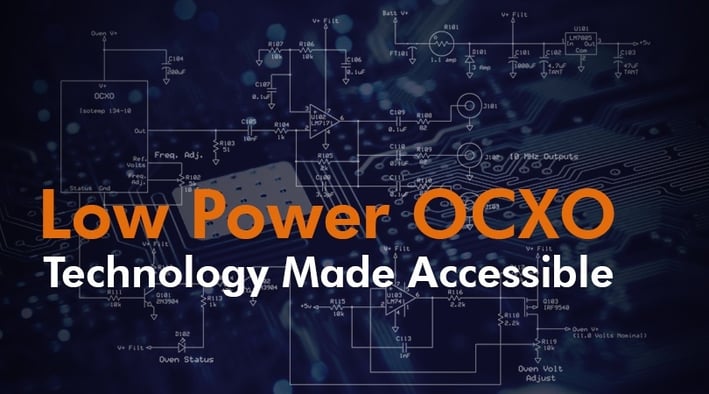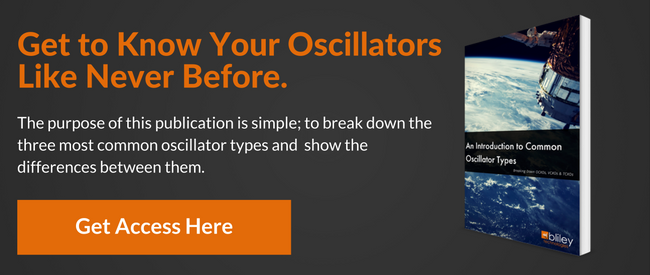
One Size Does NOT Always Fit Well
When it comes to crystal oscillators, one size does not fit all. Different applications have different power requirements, ranges of phase noise, tolerance for acceleration sensitivity, and more. As a result, different types of crystal oscillators have been developed over the years and are all used for many different applications.
The Temperature Problem...SOLVED!
The temperature of the air surrounding an oscillator will affect how well it performs. The development of temperature-compensated crystal oscillators (TCXO) helped solve this problem by adjusting the frequency generated by the crystal’s vibration to compensate for any changes in temperature. This improves the performance of the oscillator, but it does not offer perfect temperature stability, and there can still be a fair amount of phase noise, among other issues.
The solution to these problems was the oven-controlled crystal oscillator (OCXO). With these, the crystal is enclosed within an “oven” which maintains a specific temperature, greatly improving performance and temperature stability, Unfortunately, they also require a lot more power than TCXOs.
It really is a tradeoff; you can save power going with the TCXO option, or you can get better performance with an OCXO but at a much higher power cost. But what if you didn’t have to choose? What if there was an oscillator that combined the best aspects of both?
We think have just the answer. Low power OCXO systems (LP-OCXO) make oven-controlled performance more accessible to applications with limited power availability. In this article, you’ll learn what LP-OCXO is, its applications, and how this new technology will prove to be a real game-changer in the RF industry.
Why is the Low-Power OCXO So Great?
There is an increasing demand for crystal oscillators that offer stability without requiring a lot of power. A conventional OCXO has a current draw of 150 – 300 mA. TCXO, on the other hand, has a current draw of only around 2 – 20 mA, but offers less in the way of stability, and is more susceptible to ambient temperatures in certain environments. Our new low power OCXO, the LP62, pulls only 200 mW at startup, and offers a steady-state rate of power consumption of 135 mW.
The LP62 low power OCXO comes in a DIP8 package size. Dual in-line packages were first developed in the early 1960s and remain an industry standard to this day, especially in the 8-pin size. By using a DIP8 package, the LP62 can effectively serve as a drop-in replacement for more energy-draining oscillators in all kinds of devices.
Another advantage of a low power OCXO is that they usually have shorter warmup times. Oven-controlled oscillators typically take a few minutes to warm the enclosed air around the crystal to the temperature at which it best operates. The LP62 can warm up in less than one minute. Using a low power OCXO also usually results in better stability and lower phase noise, as well as lower costs (in terms power usage, as mentioned before) depending on the application.
Pick an Application...Any Application!
Low power OCXO designs are well suited to many different applications, especially battery powered devices, such as military and civilian portable radios and other transmitting/receiving devices.
Other applications for low power OCXOs include UAVs and drones, low earth orbit (LEO) satellites, guidance systems, phase lock loops, and synthesizers. They can also be used to provide accurate timing and synchronization in devices used where GPS coverage might not be available. Low power OCXO also has applications in high-tech medical equipment, such as magnetic resonance imaging (MRI) machines and other diagnostic imaging tools. (source)
If you and your engineers are working with a limited power budget on these applications, a low power OCXO might be just the solution you’re looking for. With efficient use of energy, outstanding stability, and minimal phase noise, they really do offer the best of both worlds.
To learn more about how you can put Bliley’s proven OCXO solutions to work on your next project, just send us a quick message and we’ll be happy to help.






